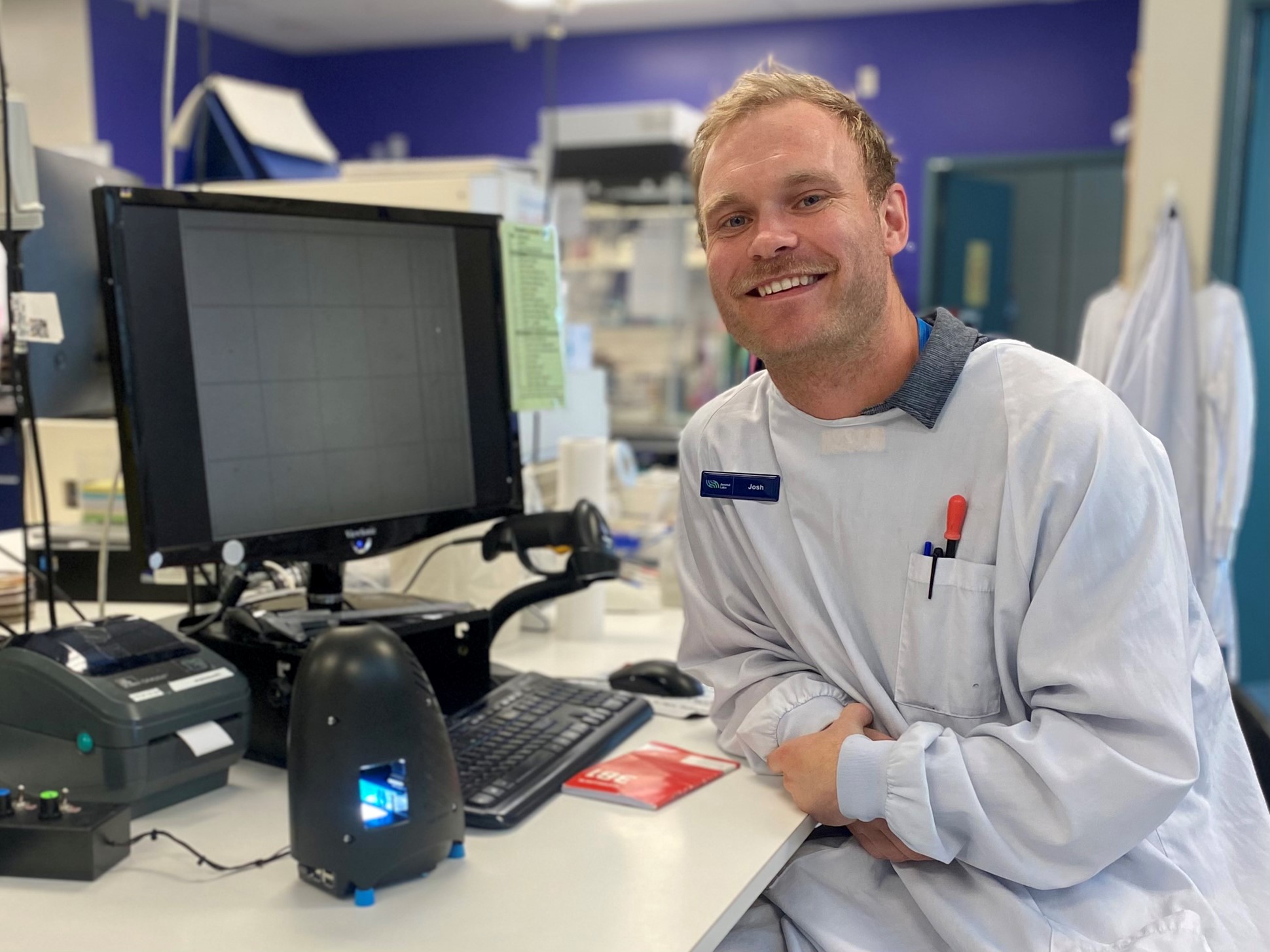If you type ‘Artificial Intelligence’ into an internet search, a definition that’ll come up is combining computer science and robust datasets to enable problem-solving. While there is much more discussion around its use and outcomes, a thesis by Dunedin-based laboratory technician Josh Donn is using AI to find practical solutions to real diagnostic problems.
“My research was to determine if a microscope designed and developed to test samples from animals and livestock could be used for humans,” says Josh, who studied for a Master of Science (MSc) degree at University of Otago.
“Awanui has been working with a local company called Techion Group, who have developed and built a digital microscope called a Micro-i, to analyse faecal samples for detecting parasites in livestock.
“Samples can be processed on farm from the livestock, and images of the sample are then digitised and analysed on Techion’s cloud platform. Farmers use the results to know the level of parasites in their stock and then assess the effectiveness of the drenches they use to treat and protect the animals.
“Techion had the idea to use the Micro-i on the farms as a point-of-care device, as it is small and built for use outdoors, so samples could be tested onsite. My research started by going further and examining whether the technology could be used in a human diagnostic context.”
With support from his Head of Department Microbiology (at the time) Gayleen Parslow, Microbiologist and thesis supervisor Professor James Ussher, and Techion Group’s Stacey McGregor, David Grimmett and Chris Attwood, Josh began his project.
“This was stage one, and because we were looking at much smaller particles than parasite eggs, to analyse red and white blood cells in human samples, the image quality and resolution needed to be much higher than for faecal analysis for parasites.
“Techion developed a new prototype digital microscope called the Nano-i, which increased the magnification and resolution of the Micro-i and presents images in much greater detail. The Nano-i was then used in the microbiology laboratory at Awanui Labs Dunedin to run tests on human fluids, such as urine, to count white blood cells which are important for indicating infectious diseases such as pyelonephritis (UTI).
“I mainly looked at urine samples, but also looked at CSF (Cerebrospinal fluid), pleural fluid and synovial fluid, which are other body fluids where cell counts are important for detecting a number of different diseases,” says Josh.
Once the Nano-i was developed, the next question was how to bring the sample imaging and the counting of the cells together. This is where Artificial Intelligence (AI) became the second half of Josh’s thesis.
“The new Nano-i was developed to give us high quality and detailed images of cells in clinical samples, and the objective then was to also count them, and deliver the results rather than these being separate tasks of work. From this point, we used the Nano-i with an AI model using Microsoft’s Custom Vision built into its onboard computer to automate the cell count,” says Josh.
“Custom Vision is based on the same architecture as the well-known ChatGPT AI and uses machine learning, and what are known as deep learning neural networks, which have no set parameters and does its own work to analyse each sample.
“We took a dataset of 117 high quality images from urine specimens. Each sample from different patients were imaged using the Nano-i and then loaded into the AI model to count the cells and produce the data and findings.”
Josh says the research has so far worked out well. “Although the dataset of images used for my thesis was small, and many AI datasets can include tens of thousands of images, the Nano-i could successfully detect, image and count red, white and epithelial cells separately in each of the individual samples and produce really promising results and efficiency.
“Each task can be done by one Nano-i in the lab, removing the need for manual counting of the cells, which requires a high degree of competency and training. The technology also saves the laboratory time, especially when the sample needs testing urgently and specimens such as CSF cell counts need to be reported immediately,” says Josh.
The thesis sets the foundation for future research says Josh. “There is certainly more scope for other uses of Nano-i and Techion’s platform at Awanui Labs, and we will continue exploring what digital technology and AI can do within the lab.”
Josh graduates in December this year and will go on to be a registered medical laboratory scientist. He will continue working with both Awanui and Techion Group on developing the platform further by expanding its use for human diagnostics, and even the potential to develop a commercial product coming to a lab near you soon.
